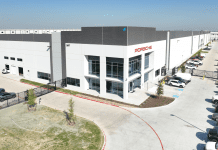Recall and warranty work are areas of opportunity for dealerships, but ultimately it’s up to the dealer to incentivize consumers to bring their vehicles in the door. In this CBT News Power Lunch, we’re tackling recall work with Juan Flores, Senior Director of Product Management at Kelley Blue Book, (KBB). Juan is responsible for furthering design and implementation of the Service Advisor product, Dealer Ratings, and Autotrader Private Seller.
In the studio we have Mike Boyd, Senior Director of Commercial Strategy for acquisition, reconditioning, and merchandising for vAuto. Mike is also the Founder of vAuto’s iRecon. A 25-year veteran of the automotive industry, Mike’s passion lies in helping dealers improve operational performance driving greater dealership ROI.
Recall work and Loyalty
The main reason why individuals don’t go to a dealership for their vehicle recall work, according to Flores, is that “OEMs and dealers alike have lost touch with the vehicle owner.” However, the KBB brand has significantly exceeded other connections with its system for recall checking. In fact, around 500,000 customers used KBB’s recall checking systems just last month. Recall work connects to customer work and both can assist dealers and their service drives in terms of building a pipeline to increase revenue opportunities and retention.
When it comes to developing a pipeline in the service department, clients are more inclined than ever to cross shop or switch to a different brand. In order to better serve customers and draw them in for something of value, Boyd says, “we have to develop better ways to service them.” About 25% of the 500,000 recalls involve safety issues. Boyd adds, “Imagine being able to reach out to those customers as a way to re-engage, or engage for the first time, and bring them in…it opens multiple avenues for additional touch points and revenue.”
"Customer loyalty comes with adding value to their experience." — Mike Boyd
On the other hand, 47% of clients who visit a dealership as a result of the KBB recall notification are more inclined to make the repair than to trade in their car. Boyd notes, “When customers walk in and you offer them value, present them with a good, and you’re providing them options, It’s a win-win.”
Yet according to Flores, “the innovative dealers are leveraging loyalty opportunities and bundling the customers’ experience” when it comes to transparent pricing. Since customers want straightforward pricing, by providing them, it enables dealers to stand out from the competition in the service area and on the back end.








